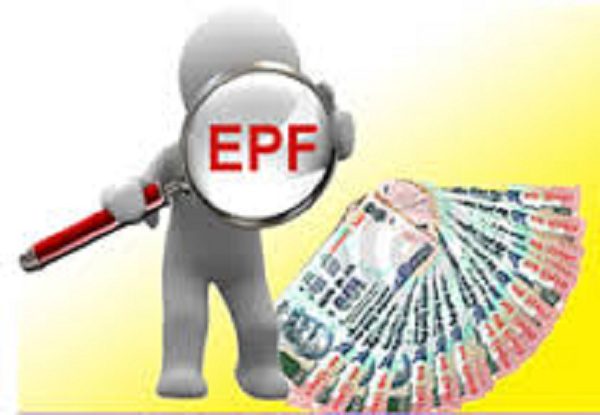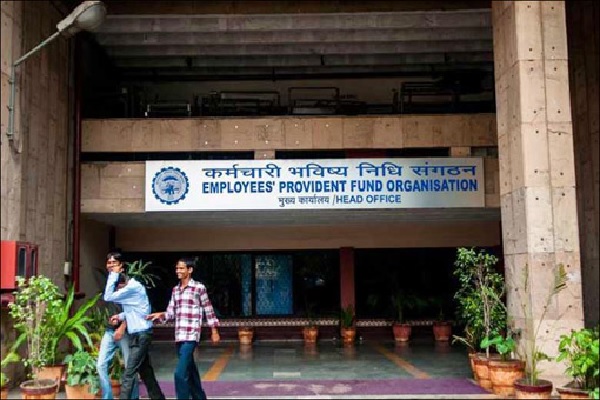
by admin | May 25, 2021 | Corporate, Corporate Governance, Corporate Jobs, Economy, Employment, Finance, Government Jobs, News, Politics, Private Jobs
 By Saurabh Katkurwar,
By Saurabh Katkurwar,
New Delhi : Amid the controversy over the withholding of a report on the country’s unemployment situation, the government has cited data from provident fund records, Income Tax filings and the National Pension System (NPS), besides a possible upswing in the informal sector to show generation of crores of new jobs.
However, this does not mean there is an increase in the jobs, experts say.
During his reply on the motion of thanks on the President’s address in the Lok Sabha on Thursday, Prime Minister Narendra Modi said new jobs were created in the unorganised sector, which accounts for 80-85 per cent employment, citing an increase in the sale of commercial vehicles, infrastructure building and housing activities.
He said about 1.8 crore people had enrolled in the Employees’ Provident Fund (EPF) in the past 15 months, and 64 per cent of them, who were below the age of 28 were first-time employees.
Modi also cited the data showing increase in the registration of employees under the National Pension Scheme (NPS) from 65 lakh in March 2014 to 1.2 crore till October 2018.
Considering the EPF enrolments as a reflector of job creation is not correct as it can be formalisation of informal jobs, said Mahesh Vyas, Chief Executive Officer of Centre for Monitoring Indian Economy (CMIE), a think tank.
“When a person enrols for the EPF, it does not necessarily mean that the person has got a job. It is quite likely that you have enrolled for the the EPF for the first time though you had a job for a long time,” he said.
“The law requires an employer with 20 people or more to register with the EPFO. If a firm has got 19 employees till yesterday and today 20th person joins in, then all 20 get enrolled for the first time. So it looks like employment has gone up by 20 when actually it is one.”
Another expert, who did not wish to be named, said there cannot be a correlation between EPF enrolment and job creation “since it has so many moving parts and variables, so one could interpret it differently”.
Modi also had said that new 6.35 lakh new non-corporate tax payers such as doctors must have provided jobs in past four years. The expert called it “incomprehensible” in the absence of the source of the data.
In his speech, the Prime Minister said he expected over 1.25 crore people have got jobs in the transport sector with the sale of 36 lakh commercial vehicles and 27 lakh auto-rickshaws.
He also cited setting up of two lakh service call centres, infrastructure building, hotel constructions and housing activities for the creation of employment in the country.
Vyas said if a farmer takes up a labourer’ job or moves to driving a truck, it cannot be considered a new job.
According to the CMIE statistics, India’s unemployment rate shot up to 7.4 per cent in December, 2018 and the number of unemployed increased by a substantial 11 million – the highest in 15 months.
Modi had taken a dig at the past governments for failing to establish standard system to tally employment and said only 7-8 sectors were taken into account to arrive at the employment rate when, in reality, jobs were created in 100-odd sectors.
Vyas said Modi was possibly referring to enterprise survey conducted by the Labour Ministry, which is one of the ways to estimate employment.
“That is not the best way to estimate employment and unemployment in country like India. But what the Prime Minister did not mention was that India also conducted a large house-hold survey. It is the most appropriate way of computing it and will capture all sectors. He is partially right but selective in the kind of survey done,” he said.
“The traditional way, which is a good way of calculating employment and unemployment, is the NSSO household survey,” he added.
The National Sample Survey Organisation (NSSO) report, which the government has withheld, said the unemployment rate was 6.1 per cent in 2017-18, post-demonetisation and was at its highest level since 1972-73 – the period since when the jobs data is comparable.
(Saurabh Katkurwar can be contacted at saurabh.k@ians.in)
—IANS

by admin | May 25, 2021 | Economy, News
 New Delhi, (IANS) In a major climbdown after persistent pressure from the trade unions and political parties, the government on Friday increased interest rate on employees provident fund (EPF) deposits to 8.8 percent for 2015-16 from 8.70 percent as it had announced earlier.
New Delhi, (IANS) In a major climbdown after persistent pressure from the trade unions and political parties, the government on Friday increased interest rate on employees provident fund (EPF) deposits to 8.8 percent for 2015-16 from 8.70 percent as it had announced earlier.
“I am happy to tell you that the EPF rate has been increased to 8.8 percent,” Labour Minister Bandaru Dattatreya told reporters here.
The provident fund rate was 8.75 percent in 2014-15 and the Central Board of Trustees (CBT) had recommended to make it 8.8 percent for this fiscal. However, the finance ministry had rejected the recommendation and had approved only 8.70 percent interest, citing lower earnings.
Most trade unions had protested the decision and the issue was also raised by political parties both in parliament and outside. Trade unionist and Communist Party of India-Marxist MP Tapan Kumar Sen had also raised it in the Rajya Sabha.
Trade unions had threatened to intensify agitation from September if the government did not comply with the demand of higher EPF interest rates.
“This protest from all central trade unions is to condemn such arrogant, anti-worker approach of the central government,” said a statement by All India Trade Union Congress (AITUC).
This is not the first u-turn the government has made in regard to the EPF.
On April 19, close on the heels of violent agitation in Bengaluru and also demand from trade unions, including from RSS-affiliated Bharatiya Mazdoor Sangh (BMS), the government had withdrawn its new rules of provident fund withdrawal.
According to the new norms proposed earlier this year, subscribers are not to be allowed to claim withdrawal of PF after attaining 54 years of age, and would have to wait till 57.
The earlier norms allowed contributors or subscribers to claim 90 percent of their accumulations in their PF account at the age of 54 years, and the final claims to be settled just one year before their retirement.

by admin | May 25, 2021 | Economy, News
 New Delhi (IANS) Adding further confusion over tax treatment of provident fund contributions proposed in the UNion Budget, the finance ministry on Tuesday said a final view was yet to be taken on the subject.
New Delhi (IANS) Adding further confusion over tax treatment of provident fund contributions proposed in the UNion Budget, the finance ministry on Tuesday said a final view was yet to be taken on the subject.
In a statement, the ministry said on members of the provident fund who invest their withdrawals in annuity funds, no tax will be levied. If not, 60 percent of the money withdrawn will be taxed. Thus far, it is clear.
But what has created confusion is over whether only the interest component will be taxed upon withdrawal or the whole corpus itself built after April 1 this year. Revenue Secretary Hasmukh Adhia had alluded that only interest will be taxed and not the corpus.
But a statement thereafter suggests no firm decision has been taken as yet.
“We have received representations today from various sections suggesting if the amount of 60 percent of corpus is not invested in annuity products, tax should be levied only on the accumulated returns of the corpus and not on the contributed amount,” it said.
“We have also received representations asking for not having any monetary limit on employer contribution under EPF because such limit is not there in NPS. The Finance Minister would be considering these suggestions and taking a view on it in due course.”
The salaried class was shocked by Monday’s budget proposal presented by Finance Minister Arun Jaitley that seemed to suggest that 60 percent of withdrawals from the provident fund accounts will be taxed — that, too, with retrospective effect.
Jaitley said 40 percent of the National Pension Scheme (NPS) corpus would be tax-exempt at the time of withdrawal to make it attractive for the savers. He said the annuity fund, which goes to legal heirs, also won’t be taxable.
In case of superannuation funds and recognised provident funds, the same norm of 40 percent of corpus to be tax-free will apply in respect of corpus created out of the contributions made on or from April 1, the minister added.
He said the government was also proposing a monetary limit for the contributions of employer in recognised provident and superannuation fund at Rs.150,000 per annum for taking the tax benefit.
The service tax on single premium annuity policies had been reduced to 1.4 percent from 3.5 percent of the premium paid in certain cases.
Similarly, Jaitley also announced exemption of service tax for annuity services provided by NPS and services provided by Employees Provident Fund Organisation (EPFO).
The earlier clarification from Adhia seems to have come due to the uproar against the government’s proposal. But the ministry statement has clearly said the matter was not closed as yet.
“The Finance Bill does not reflect Adhia’s clarification. Perhaps the government may change the relevant provisions,” Neha Malhotra, executive director of Nangia and Company, an international tax advisory and accounting firm, told IANS.



